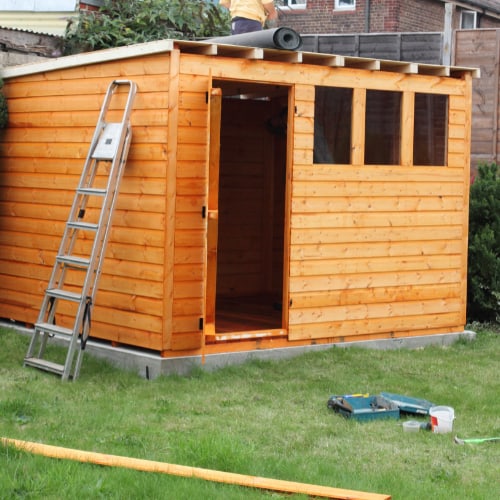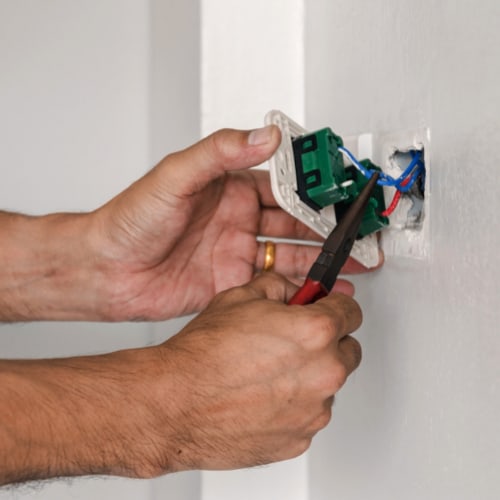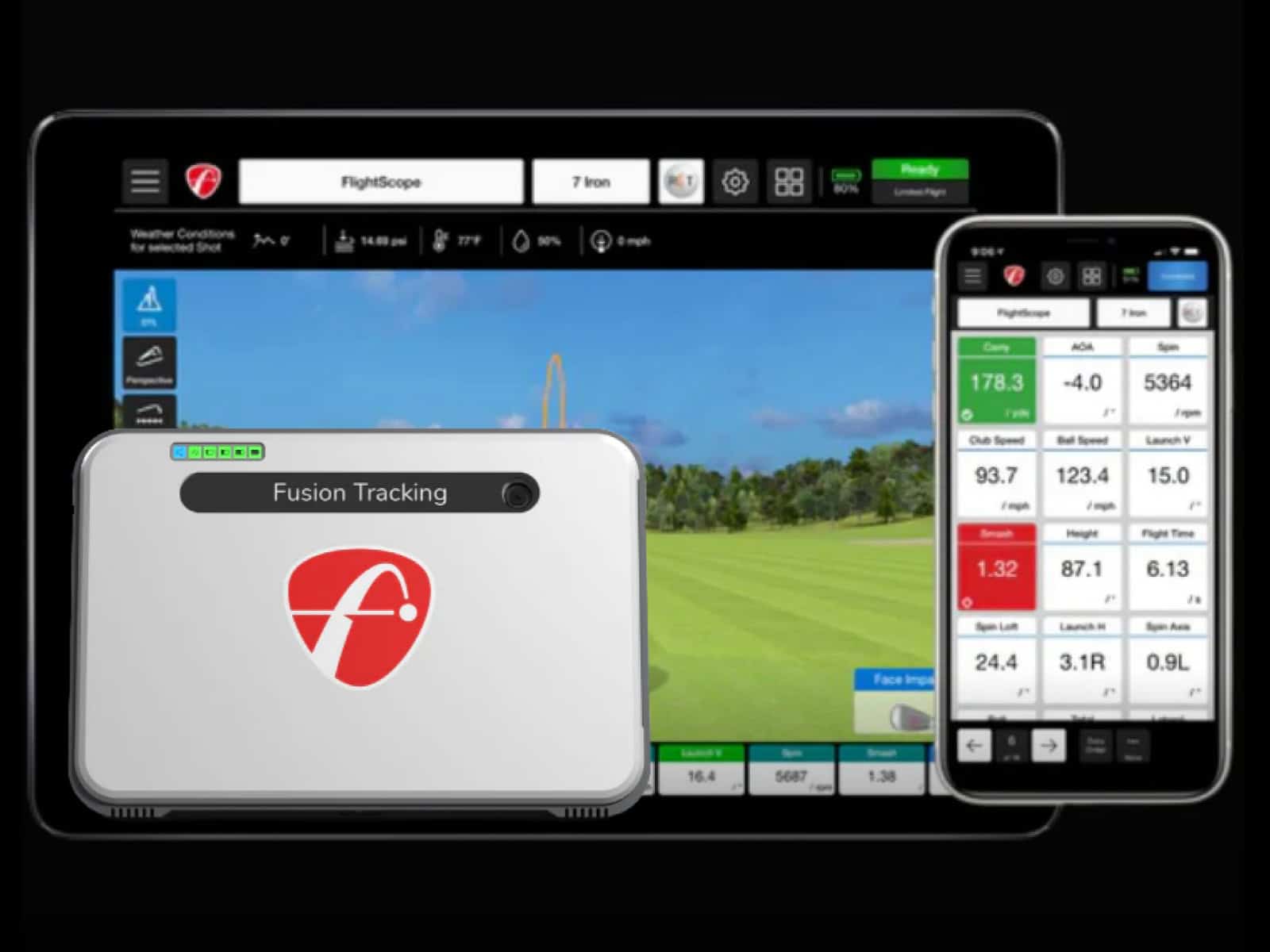Golf simulator sheds and man caves have become popular as technology has improved and costs decreased.
Building a dedicated golf simulation space in your home or backyard can transform your golf game. With proper planning and execution, you can create the ultimate at-home golf oasis tailored to your needs.
When starting a golf simulator project, key factors to consider include: budgeting, zoning laws, space requirements, power and climate needs, protecting surfaces from ball strikes, and personalizing with memorabilia.
This guide explores designing, building and customizing your own golf simulator shed or man cave. With strategic planning and smart investments in technology and features, you’ll enjoy unlimited access to golf simulation right from home.
Designing and Building a Golf Simulator Shed
Constructing a dedicated golf simulator shed in your backyard is one of the most flexible and cost-effective ways to have your virtual golf system at home. With strategic planning and execution, you can build an insulated, climate-controlled shed for golf simulation and practice.

There are several key factors to consider when designing and building your golf simulator shed:
Selecting a Shed Size and Layout
When selecting the size and layout of your simulator shed, be sure to determine the required dimensions for a full swing area and ample space to set up your simulator equipment.
It’s also important to allow additional square footage for comfortable seating, amenities like a mini-fridge or storage closet, and enough circulation area. Carefully measuring and mapping out your shed layout is crucial.
Permits and Zoning Regulations
Researching the permits and zoning regulations in your local area is an essential early step. Make sure to check on any requirements related to maximum shed size, setbacks from property lines, and whether any permits are needed for electrical or construction work.
You want to ensure your building plans fully comply with local ordinances before proceeding with the actual shed construction.
Power and Internet to the Shed

Installing proper electrical wiring and outlets is necessary to power your simulator equipment and lighting. Also, consider the internet connectivity required for your simulator software and analytics. Running an ethernet cable or ensuring a strong WiFi signal that reaches the shed is recommended.
Insulation and Climate Control
Pay close attention to insulation, climate control systems, and ventilation to keep your simulator shed comfortable year-round.
Insulate the walls, ceiling, and floor for soundproofing and temperature regulation. An AC unit, space heater, exhaust fan, and dehumidifier are typically required.
Surfaces and Flooring
Choose durable surface materials to protect the walls and ceiling from repeated ball strikes.
Choose a flat, resilient flooring able to withstand hundreds of swings with irons and woods.
Doors, Windows, and Ventilation
Carefully consider the doors, windows, and ventilation plan for your simulator shed. Large doors that open fully are essential for easily moving bulky simulator equipment and accessories in and out of the space.
Generous windows can allow helpful natural lighting while also providing necessary air circulation. Make sure to install high-quality windows that can withstand the occasional errant golf ball. Proper ventilation with exhaust fans, vents, and climate control systems will reduce humidity and provide fresh airflow.
With attentive planning and construction, your backyard golf simulator shed can be an inviting, functional space perfect for improving your game.
Customizing Your Golf Simulator Shed
After constructing the basic structure of your golf simulator shed, the fun part begins – customizing the interior to create your ideal simulation space. With creative planning, you can equip your shed with the must-have amenities and personal touches to maximize enjoyment.
Choosing the Right Flooring

The flooring is a major consideration for durability, safety, and simulator accuracy. Synthetic turf, rubber mats, low-pile carpet, or athletic flooring are good options.
The key is choosing a flat, consistent surface that mimics the grass on an actual course.
Protecting Walls and Ceiling
Special wall panels or netting will prevent damage from errant shots. Consider materials like high-impact vinyl, acrylic sheeting, or indoor court netting. Suspended ceiling panels also absorb impact.
Comfortable, Custom Seating
Outfit your space with plush chairs, a couch, or bar-style seating for relaxing between swings.
In addition, cup holders, charging stations and refrigerators are nice additions.
Theming and Personalization
Make it your own with memorabilia displays, photos, trophies, framed prints, and other golf décor.
Neon signs, golf art and accessories, etc. all make great custom touches.
Additional Amenities
Consider a ball dispenser, club racks, equipment storage, a mirror, a mini-fridge, or even a half-bathroom for convenience.These additions make the experience more comfortable and enjoyable.
Planning Your Man Cave Golf Simulator

Once the design and layout of the shed space is done, it’s time to start thinking about your golf sim package to use and any accessories you want to add.
Selecting the Best Simulator
Research top simulator brands like SkyTrak, Flightscope, Foresight Sports, etc. (or even opt for premium ones from HD Golf, Trackma, Full Swing, Golfzon, etc.).
Key features to evaluate include sensor accuracy, software options, analytics, and included components. Budget at least $2,000-$5,000 for a quality system. The more you can afford to invest in your system, the better the performance and overall experience will be.
Creative Setup Ideas
Get creative with fun themes like a sports bar, pro shop, locker room or “19th hole” lounge. Add memorabilia, neon signs, golf décor, and accessories to match your vision.
There are no limits to the creativity you can put in your simulator setup theme.
Protecting Surfaces
Use protective mats, netting and padding in hitting areas. Suspended ceiling panels help protect ceilings. Soundproofing the entire space is also advised.
Do Your Homework Before Making the Final Decision
Research costs, technology considerations, space requirements, and other factors to make informed decisions when planning your man cave simulator.
There are countless options in the market today, with prices ranging from a few hundred dollars to $70,000+; Think about your needs, budget, preferences, etc. and don’t hesitate to seek professional assistance to ensure you are making the right choices.
Frequently Asked Questions
We have compiled a list of the most widely asked questions related to the topic to ensure you are equipped with the necessary knowledge to build your own golf simulator shed.
What is the best shed size for a golf simulator?
When converting a shed into a golf simulator bay, the ideal dimensions to allow a comfortable, unrestricted full swing are at least 10 feet in ceiling height, 8 feet in width, and 18 feet in depth.
A height of 10′ ensures enough overhead clearance to swing a driver without fear of contact, allowing freedom through the ball. A width of 8′ provides adequate side-to-side room at address and for the swing arc.
Finally, a depth of 18′ enables executing full shots from driver to wedges while still leaving space behind for simulator components.
Dimensions can vary based on personal swing traits, but these general guidelines will accommodate most golfers. Focusing on height first, then width and depth, will ensure your shed has ample dimensions to house an immersive, functional golf simulator.
How much does a golf simulator shed cost to build?
The cost of a golf simulator shed can range from around $25,000 to $35,000 on average based on the shed’s dimensions. A 14’8″ x 24′ basic wood simulator shed starts at approximately $25,650, while the same width but extending to 30′ deep raises the price to around $30,285.
Upgrading to LP Lap siding increases costs by $4,000-5,000 over basic wood. So in general, a medium 14-15 foot wide simulator shed with adequate length for full swings will cost $25,000-$35,000 depending on materials and precise dimensions.
How to build a custom shed?
The key steps in building a custom shed are:
1) Construct a solid foundation
2) Build a sturdy floor frame and cover with sheeting
3) Frame the walls to the desired size
4) Construct the roof frame
5) Add exterior siding
6) Install plywood roof sheeting
7) Shingle the roof
8) Add windows and doors
9) Install ventilation
10) Add decorative or functional elements like shutters, roof drainage, and a ramp.
Building your own shed requires a set of special talents and special tools that not everyone can possess. If you are a handyman and have the tools you need, doing it yourself will help you save a lot of money. However, if you lack the skills and knowledge to build the shed properly, it will be better to hire a professional.
Final Thoughts
Creating a home golf simulator in a shed, man cave or backyard cabin allows avid golfers to practice and play anytime. With proper planning and preparation, you can build a customized simulator space matching your needs and budget.
Key steps include researching permit requirements, estimating costs, considering power and climate needs, selecting durable surfaces, and personalizing with golf-themed comforts. Avoid common pitfalls by consulting experts if required.
A thoughtfully designed personal golf simulator provides unlimited access for improving your game and enjoying your favorite sport right from home, regardless of weather or travel constraints. With strategic planning tailored to your space and interests, you can construct the ultimate golf oasis and sanctuary right in your own backyard.
If you’re considering extending your setup outdoors, an outdoor inflatable golf simulator tent can be a practical solution. These portable enclosures provide weather protection, easy setup, and added flexibility.





